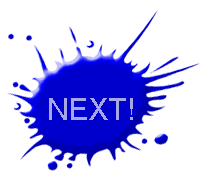
By: Emily Zalewski
Books:
experiments. In talking about these movements, it gives brief descriptions on featured painting from the respective movement.
The book explains in depth what impact Picasso’s paintings may have on how the observer views a painting.
how he came up with the designs and compositions.
Matisse. Included in the book are discussions between Rubin and other topic related experts.
recognize the object being depicted. It also gives background information on Picasso and his art.
relationship between Braque and Pablo Picasso.
Journals:
art. It is an intriguing article with a unique view on the cubist’s pieces and personality.
includes paintings such as the famous Les Desmoiselles d’Avignon.
should be credited for the creation of Cubism: Braque of Picasso.
evolution of Cubism between Picasso and Braque.
piece and how Braque achieved such results.
instead. The article is mainly about Dallas acquiring these pieces and sharing with the community.
Internet:
genealogy tree to help clarify some relationships.
ideas. The article also takes apart the elements of Picasso and Braque’s paintings, such as light, and the way it is used.
exhibition at the Museum of Modern Art in New York. The main focus, however, is the lives of the two cubism movement leaders.
Website research and design by Emily Zalewski
Last Updated: 10.24.05
- Cogniat, Raymond. Georges Braque. New York: Harry N. Abrams, Incorporated, 1980.
experiments. In talking about these movements, it gives brief descriptions on featured painting from the respective movement.
- Mallen, Enrique. The
Visual Grammar of Pablo Picasso. New York: Peter Lang Publishing, Inc.,
2003.
The book explains in depth what impact Picasso’s paintings may have on how the observer views a painting.
- Monod - Fontaine and E. A. Carmean, Jr. Braque: The Papiers Collés. Baltimore: Garamond/Pridemark Press, Inc., 1982.
how he came up with the designs and compositions.
- Rubin, Varnedoe, and Lynn Zelevansky. Picasso and Braque: A Symposium. New York: Museum of Modern Art, 1992.
Matisse. Included in the book are discussions between Rubin and other topic related experts.
- Rubin, William. Picasso: In the Collection of The Museum of Modern Art. St. Louis: Von Hoffmann Press, Inc., 1972.
recognize the object being depicted. It also gives background information on Picasso and his art.
- Wilkin, Karen. Georges Braque. New York: Abbeville Press, 1991.
relationship between Braque and Pablo Picasso.
Journals:
- Ettinger, Tom. “Picasso, Cubism, and the Eye of the Beholder: Psychoanalysis and Cognitive Psychology.” American Imago. 53. (1996) 53-89.
art. It is an intriguing article with a unique view on the cubist’s pieces and personality.
- Gikandi, Simon. “Picasso, Africa, and the Schemata of Difference.” Modernism - Modernity. 10 (September 2003) 445-480.
includes paintings such as the famous Les Desmoiselles d’Avignon.
- Ivry, Benjamin. “Braque Without Picasso.” Art & Antiques. 20 (May 1997) 66-71.
should be credited for the creation of Cubism: Braque of Picasso.
- Kuspit, Donald. “Cubist Hypochondria: On the Case of Picasso and Braque.” Art Forum International. 28 (September 1989) 112-116.
evolution of Cubism between Picasso and Braque.
- Shone, Richard. “Madrid: Georges Braque.” The Burlington Magazine. 144 (June 2002) 380-382.
piece and how Braque achieved such results.
- “Three Cubist Works for the Dallas Museum of Art.” Apollo (London, England). 148 (October 1998) 41-43.
instead. The article is mainly about Dallas acquiring these pieces and sharing with the community.
Internet:
- Dabrowski, Magdalena. Georges Braque. Available [Online]: <http://www.discoverfrance.net/France/Art/Braque/Braque.shtml> [1 October 2005]
- Pablo Picasso Official Website. 2000. Available [Online]: <http://www.picasso.fr/anglais/> [1 October 2005]
genealogy tree to help clarify some relationships.
- Wee, Cavan. October 2005. Analytical Cubism 1907 -1911: Pablo Picasso and Georges Braque. Available [Online]: <http://www.cavant-garde.com/articles/cubism.shtml> [1 October 2005]
ideas. The article also takes apart the elements of Picasso and Braque’s paintings, such as light, and the way it is used.
- Wilkens, Karen. December 1989. O Pioneers! Picasso and Braque 1907 - 1914. Vol. 8, No. 4. Available [Online]: <http://www.newcriterion.com/archive/08/dec89/pioneers.htm> [1 October 2005]
exhibition at the Museum of Modern Art in New York. The main focus, however, is the lives of the two cubism movement leaders.
Website research and design by Emily Zalewski
Last Updated: 10.24.05


